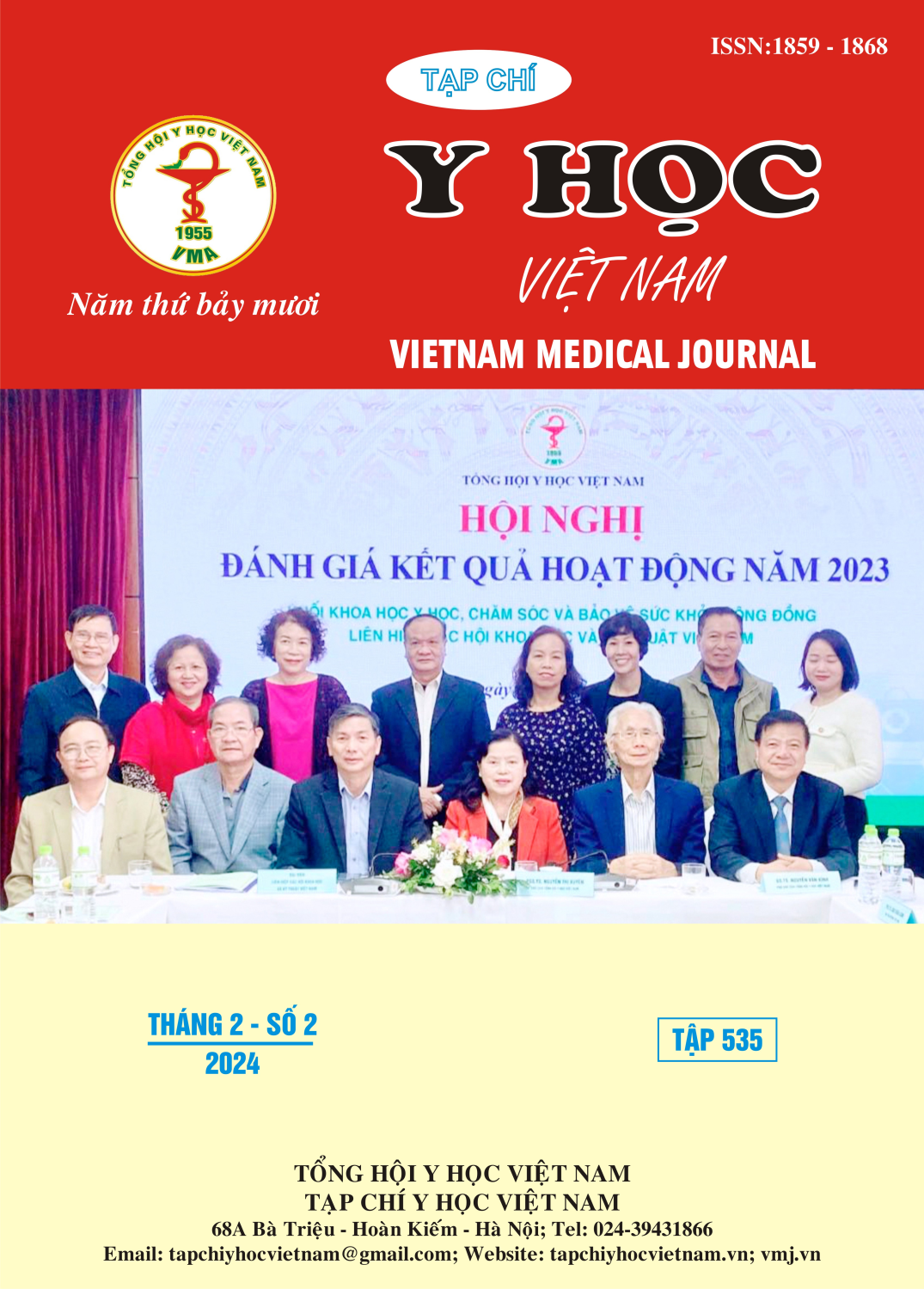RESULT OF VERTEBROPLASTY IN THE TREATMENT OF THORACO-LUMBAR VERTEBRAE COMPRESSION PATIENTS DUE TO OSTEOPOROSIS AT DONG ANH GENARAL HOSPTAL
Main Article Content
Abstract
Introduction: Vertebroplasty has been widely used to treat thoraco-lumbar vertebrae cpmpression fractures caused by osteoporosis. Objective: This article aims to evalute the outcomes of restoring the body height of the thoraco-lumbar vertebrae compression patients due to osteoporosis in those undergoing vertebroplasty in terms of technical effciency and pain relief of the technique. Subjects and Methods: This is a descriptive study of 148 patients (229 vertebral bodies) with thoraco-lumbar vertebrae compression due to osteoposis propectively who were treated with vertebroplasty at Orthopedics Departement, Dong Anh genaral hospital between January 2020 to March 2023. Results: Mean age: 74.86±8.20 (64-93), mainly 70-79 years old (69.12%). Female/male: 3.6/1, 100% osteoporosis with T score ≤-2.5. Pain due to osteoporosis alone 21.09%, with trauma factor accounted for 78.91%. 100% of patients experience pain relief on the first day after the produce. The average VAS score decreased significantly from 8.22±1.17 before surgery to 2.67±0.57, after 24 hours and 0.86±0.16 after 3 months. After 3 months, according to modified MacNab criteria, the excellent and good results in 132/148 patients (89.19%), moderate results in 16/148 patients (10.81%), no patients have poor results. The symdorms is surgery were the percentage of patients who were lateral fistula 23/229 (10.04%) and disc leakage 13/229 (5.68%). Conclusions: Vertebroplasty is safe and minimally invasive procedure that provides a good methods for pain relief in patients with vertebral body compression fracture caused by osteoporosis.
Article Details
Keywords
Cement injection, vertebrae compression, osteoporosis
References
2. Cheng J, Muheremu A, Zeng X, Liu L, Liu Y, Chen Y, (2019). Percutaneous vertebroplasty vs balloon kyphoplasty in the treatment of newly onset osteoporotic vertebral compression fractures. Medicine 98(10): e14793.
3. Blasco J., et al., (2013). Effect of vertebroplasty on pain relief, quality of life, and the incidence of new vertebral fractures: a 12-month randomized follow-up, controlled trial. J Bone Miner Res, 27(5): p. 1159-66.
4. Galibert P, Deramond H, Rosat P, et al, (1987). Preliminary note on the treatment of vertebral angioma by percutaneous acrylic vertebroplasty. Neurochirurgie; 33(2): 166-168.
5. Farrar, J.T., et al., (2001). Clinical importance of changes in chronic pain intensity measured on an 11-point numerical pain rating scale. Pain; 94(2): 149-58.
6. Genant Harry K, Chun Y Wu, Cornelis van Kuijk, et al, (1993). Vertebral fracture assessment using a semiquantitative technique. Journal of bone and mineral research, 8(9), pp.1137-1148.
7. Hà Thoại Kỳ, Phạm Văn Năng, Nguyễn Duy Linh và cs, (2022). Đánh giá kết quả phẫu thuật điều trị lún đốt sống do loãng xương bằng phương pháp bơm xi măng sinh học không bóng tại bệnh viện đa khoa trung ương Cần Thơ năm 2021-2022. Tạp chí Y Dược học Cần Thơ, 51: 163-168.
8. Hà Văn Lĩnh, Nguyễn Lê Bảo Tiến, Phan Minh Trung và cs (2021). Kết quả bơm xi măng qua cuống điều trị lún đốt sống ngực, thắt lưng do loãng xương tại bệnh viện Thanh Nhàn. Tạp chí Y học Việt Nam, 499(1&2): 109-112.
9. Hoàng Chí Thành, Đỗ Đình Lộc, (2023). Nhận xét kết quả phẫu thuật tạo hình đốt sống băng bơm cement sinh học ở bệnh nhân xẹp đốt sống tại bệnh viện đa khoa tỉnh Bắc Giang. Tạp chí Y học Việt Nam, 522(2): 198-202.
10. Trần Anh Tuấn, Trần Văn Lượng (2021). Đánh giá hiệu quả của phương pháp tạo hình đốt sống qua da bằng bơm xi măng sinh học không bóng trong điều trị xẹp cấp nhiều đốt sống do loãng xương. Tạp chí y học lâm sàng, 67:53-59.


